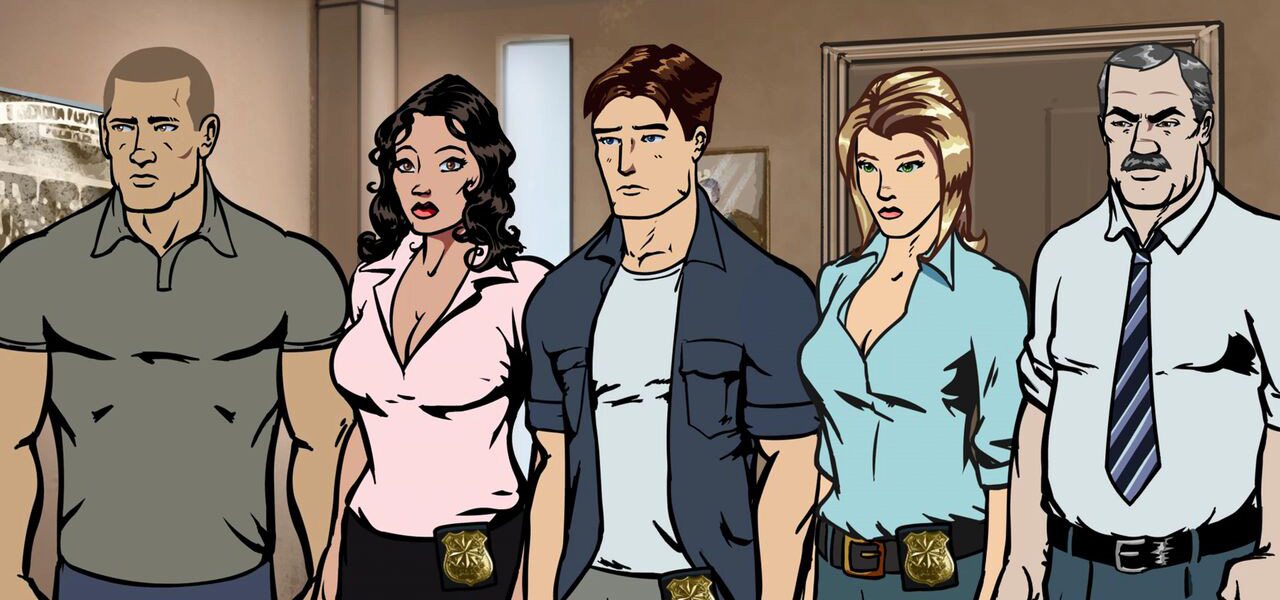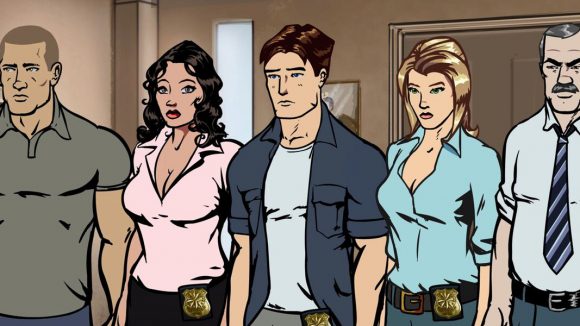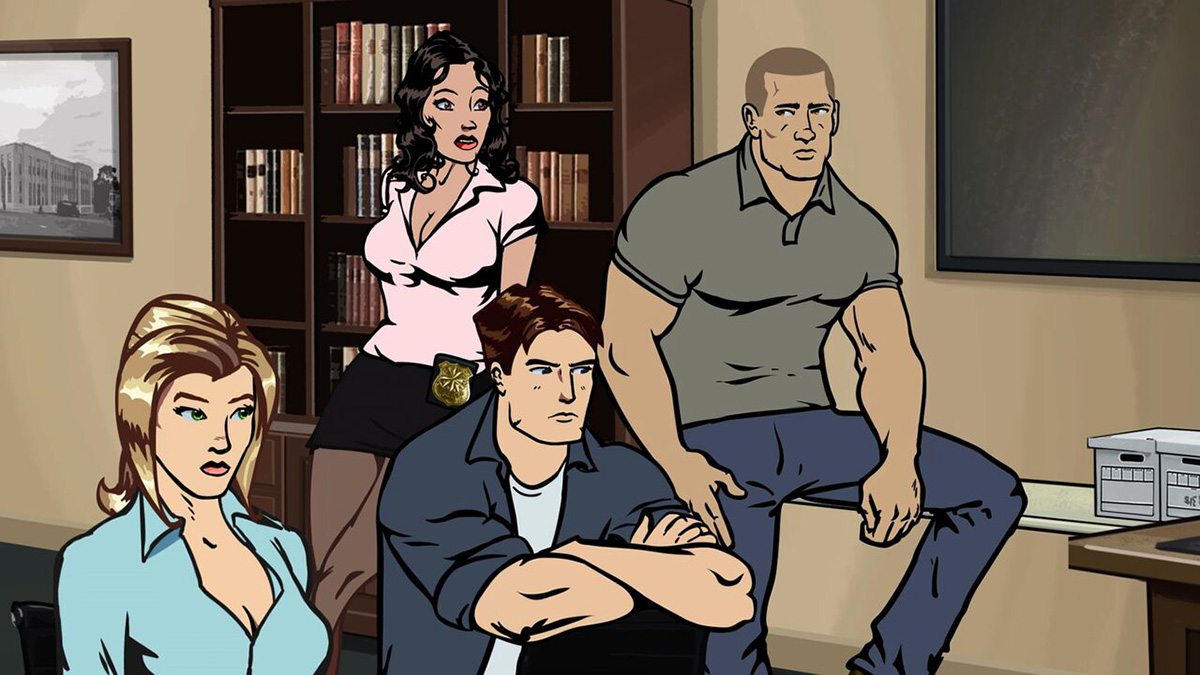

Netflix Looks To Australia For Its New Adult Series ‘Pacific Heat’
Original animated series out of Australia are a rare breed. But even more unique is Australian animated content for adults. One prolific and mostly live-action comedy production company from that country, Working Dog Productions, has bucked the trend with the new series Pacific Heat, which airs as a Netflix Original in the United States, Canada, the U.K., and Ireland as a Net
Pacific Heat is set on Queensland’s famous Gold Coast beachfront strip, and is a satirical take on classic cop series like Hawaii Five-O. It tells the story of an elite undercover special unit called ‘Pacific Heat,’ although the team often find themselves operating outside the law. Viewers might initially see Archer as the inspiration for the adults-only Pacific Heat, but it actually spun out of a years-old radio play by the same creators.
Co-creator Rob Sitch, who also voices Special Agent Todd Sommerville and several other characters in the show, is a mainstay of comedy television, films, and radio in his home country. Those not from Australia may know of Sitch’s work, and that of the other creators, Santo Cilauro, Tom Gleisner, and Michael Hirsh, from the films The Castle and The Dish. Sitch spoke to Cartoon Brew about how Pacific Heat was conceived, why he was worried he was just re-making Scooby-Doo, and why a voice actor has to worry less when they’re doing animation than radio.
Cartoon Brew: Where did the idea come from for Pacific Heat?
Rob Sitch: We did a radio play for a couple of years on [Australian radio station] TripleM, and it was a daily radio show. We did probably hundreds of episodes. I loved it because with just a few voices, you can get huge production values with just ten cents. But we always thought about a home for it, and animation was one of those homes.

The funny thing is—and this is a lesson that I would have loved to learned a long time ago—writing determines animation. Animation doesn’t determine writing. So you’ve got to fit the animation to your writing. Now, our writing was nothing crazy – you had to obey gravity, you actually had to address proper dress sense, the city had to look real. And so the way we wrote it didn’t allow much latitude. It had to be quite detailed and we’re a bit surprised how detailed we had to be.
What was involved in conceptualizing and storyboarding the show?
Rob Sitch: We did animatics, and again the story you’re writing determines the animation. I look at South Park rather wistfully. In my dreams I wish we would have been able to just draw a circle with a couple of eyes. And it feels like we could have done it a whole lot quicker. But we worked on it really bit-by-bit-by-bit, because we found every character had to be wearing something that felt right. So we were choosing their clothes and their guns, and their shoes. We thought we wouldn’t have to but if they didn’t have the right boots, it sort of threw you out. I mean, it’s a cartoon, but, put it this way, if it didn’t look right it was a distraction, and that threw the viewer out.
There’s obviously a lot of Australian or ‘Aussie’ tropes and in-jokes in here. How do you think that might translate to international audiences?
Rob Sitch: We’re not trying to be global. Animation is instantly mostly global, because you accept whatever world you’re given in animation. The only thing we were all worried about was our voices, but, I don’t know, the world’s changing. If you’re not a Scandinavian crime drama you’re not worth watching in some ways these days [laughs]. And so I find the sort of people that get into animation are pretty global.

Because it’s an animated series for adults, was there anything you felt you couldn’t get away with?
Rob Sitch: I’ve only learned one lesson: if you want to make something for a 14-year-old boy, make it for an adult. I mean, they see you coming. The best thing you can ever do is make it absolutely for adults, and then 14-year-olds will decide to come along.
Were there any animated shows that you looked to for inspiration?
Rob Sitch: Funnily enough, early on we wondered whether we were just developing Scooby-Doo – we had four people and they were solving crimes, and we were just missing a dog. That was our early worry – are we going to look like Scooby-Doo? But as our style developed into a very real style, it separated itself from Scooby.
Was there one particular scene you can identify that was really challenging in this first series?
Rob Sitch: I actually found that guns matter. The criticism we used to use is, ‘It looks a bit cartoony,’ which is an irony. Sometimes in cartoons all things like guns and bombs – they spray off and it can end up looking cartoony. That ended up being more important than we thought.
And the other challenge was that I’m so used to worrying about different accents and which part of the world they come from and which part of an individual country they come from, but the best part is once you animate the voice it’s like a magic trick. The voice becomes twice as much like the animation as it does in the audio studio. I reckon there’s a couple of my voices that were supposed to be separated by a thousand miles but they sounded like they were in the same zip code. But when they were animated they looked like they were in different universes.
Pacific Heat’s 13-episode first season is screening in Australia on The Comedy Channel on Foxtel, and in the U.S. and other territories on Netflix.

.png)